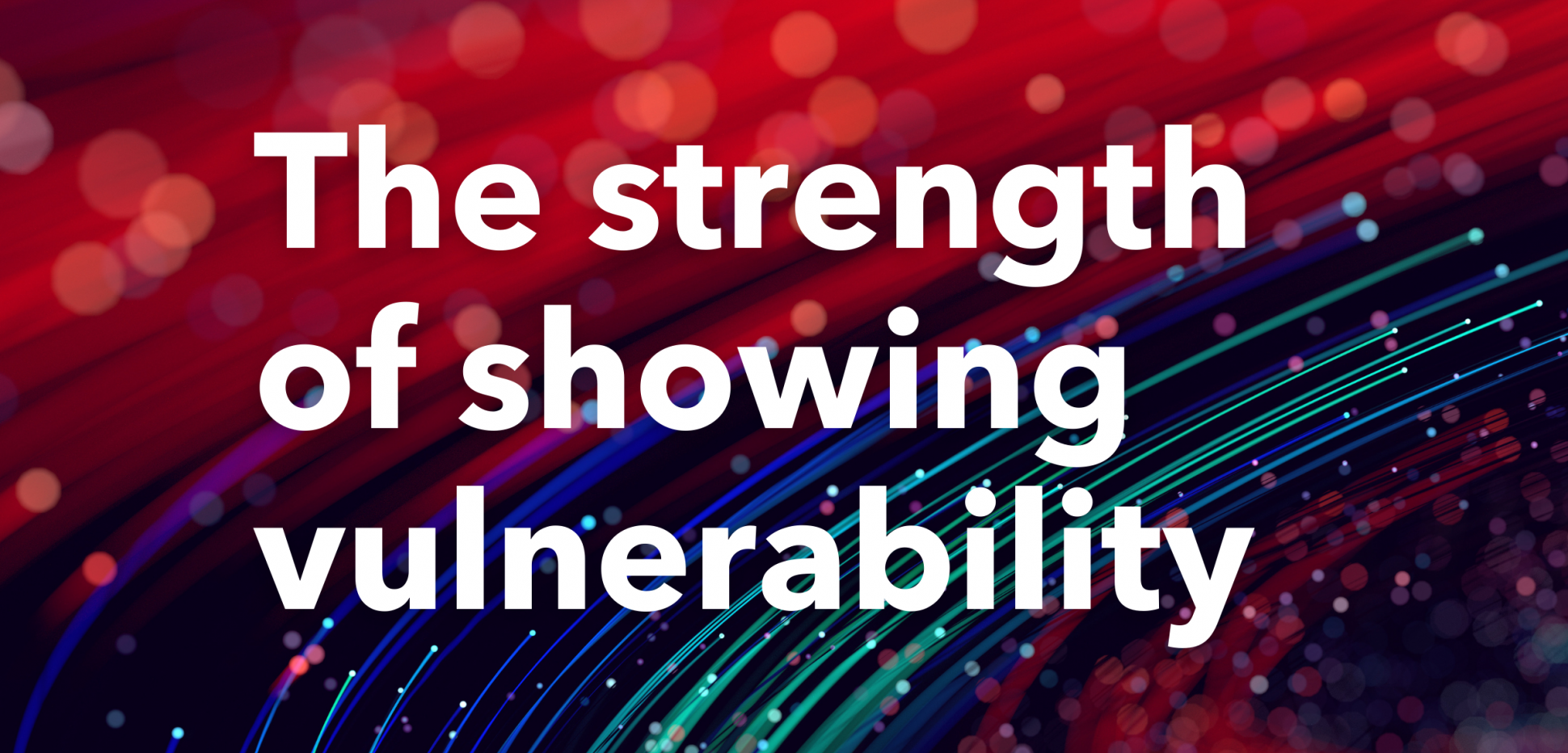The Role of Vulnerability in Leading Others Authentically

Vulnerability is a subject we come back to time and again. For leaders and leadership teams to be truly authentic in their approach, it is important to be able to show vulnerability. But it is invariably a hard thing for leaders to grasp - and embrace. Here we look at what vulnerability really is, why it's important in the context of work (as well as our other relationships) and how we can show it.
Through our leadership programmes and senior teamwork, we often ask leaders to show some vulnerability in order to increase intimacy in their team or organisation. We advocate this as it leads to increased trust and a climate where people can truly connect, stretch themselves, take risks and make mistakes in order for businesses and organisations to become more effective.
We know it's difficult for leaders and often we hear the natural concern that they might lose credibility or might be perceived as weak, uncertain or not in control. This is a legitimate concern - yet why is there such a paradox? Why is it that the ability to express vulnerability often leads to leaders being experienced as more real, more courageous and more authentic?
So, what do we actually mean by 'vulnerability'?
The Oxford English Dictionary defines vulnerability as “the quality or state of being exposed to the possibility of being attacked or harmed, either physically or emotionally”. That sounds scary! At Sheppard Moscow, we describe vulnerability in the organisational context as the way we palpably experience a person connecting with us, with themselves and with the dilemma or challenge at hand. Think of the leader who sits with their team and admits they don’t have all the answers, they feel uncertain about the future or they have made a mistake, but is 100% committed and engaged in building the business because they believe in their mission and team. Think of the leader who shares a painful professional or personal experience that has shaped them into the leader they are today and drives their vision and passion.
How can we show vulnerability?
Showing vulnerability in our view is a choice. It is the moment when we intentionally decide to open a hidden part of ourselves up to others. This part is often unformed, definitely messy and a bit raw or sensitive. The moment we do it, we feel exposed and open to criticism or attack, we risk the judgement of others by showing our flaws and the feelings attached to them. Expressing vulnerability can often happen when we disclose something key about ourselves such as our values, experiences, our thoughts and feelings that are important to us and show a less perfect side of the one we usually like to or try to project. The challenge here is that we often feel more able to reveal this softer side when we feel confident and well-resourced when we are more resilient and therefore able to deal with the response to our vulnerability. And yet, the powerful irony is that the ‘soft under-belly’ we most need to access as leaders, that will touch and help others is almost always instinctively sheltered, protected by long-standing armour. It takes courage to expose this and when it occurs, it can be amazingly effective.
The effects of showing vulnerability at work
Let’s come back here to the question of whether one loses credibility or appears weak when one shows one’s vulnerability:
When we have shared our own vulnerabilities as consultants, and when we have enabled leaders we work with to be more vulnerable – what have we noticed?
Allowing ourselves to be vulnerable enables others to understand us better. This means they will find it easier to follow us, to invest in our vision and strategy as they ‘get’ where we are coming from. It also encourages openness and sharing vulnerabilities from others (one begets the other). We often see this in our work with senior teams, where someone’s courage to show vulnerability has often led to others opening up and the whole conversation shifting. Vulnerability creates intimacy in relationships, which allows us to support and challenge each other more effectively. If people in organisations are able to be vulnerable with each other, they create a climate of trust amongst each other, where people have each other’s backs. They also create space for bravery, innovation and creativity. Without vulnerability in leadership, others would not be able to step up and engage with their creative and innovative selves.
Tools for enabling vulnerability at work
In our client work we aim to create the conditions to enable others to be safely vulnerable. It is not about encouraging them to ‘let everything hang out’ or being needy, it is about enabling them to own their vulnerability with authority and purpose.
One powerful way to invite leaders to engage with and share their vulnerabilities is through work on their ‘lifelines’ to help them to engage with stories in their lives – both good and bad – which have formed them into who they are as a leader.
Another way is to guide teams or groups through a process of self-disclosure from safer to more risky disclosures to develop the ‘openness-muscle’ and help them notice the impact this has on their relationships and the climate amongst themselves.
Often we also invite senior leaders to share moments with more junior staff where they have made mistakes and the learning they have taken from that and how this has shaped them. This allows others to feel they don’t have to be perfect and can take a risk. The return for businesses is often a more engaged, entrepreneurial and relational work-force that has the courage to have important and often difficult conversations with each other.
To read more about vulnerability, trust and psychological safety in leadership, here are a few articles for you:
We take a deep dive to look at trust in leaders, teams and organisations
Psychological safety is something that leaders and teams should embrace together
The dangers of losing trust in the workplace and how to maintain it

 Dorothee Stoffels
Dorothee Stoffels 
 Aoife Keane
Aoife Keane 
